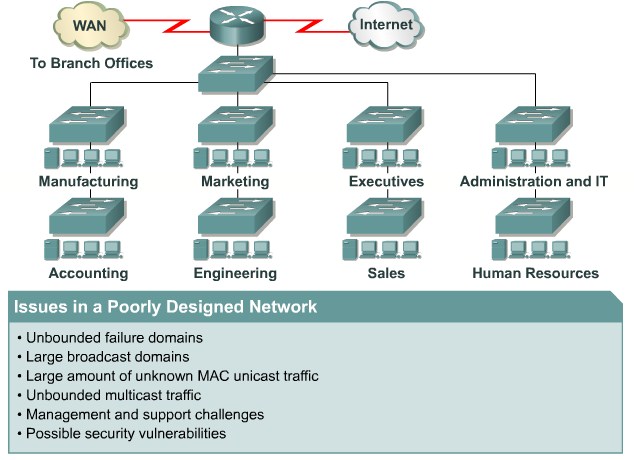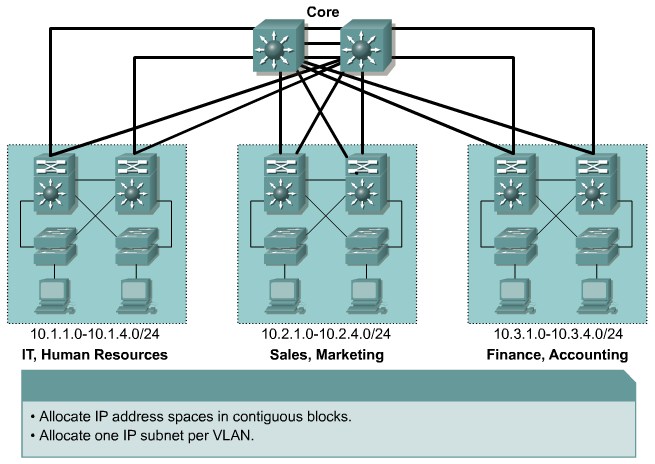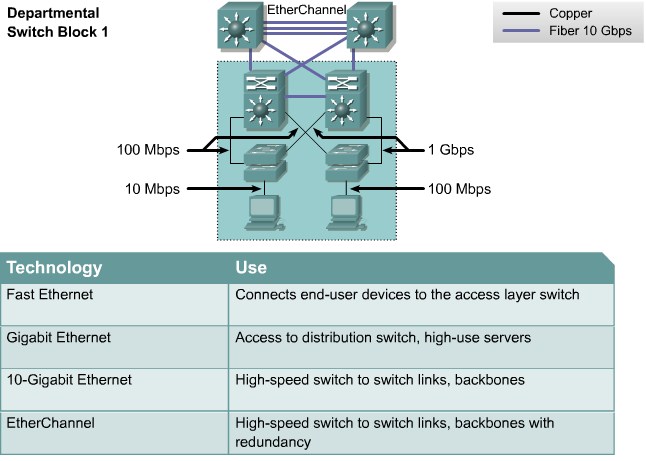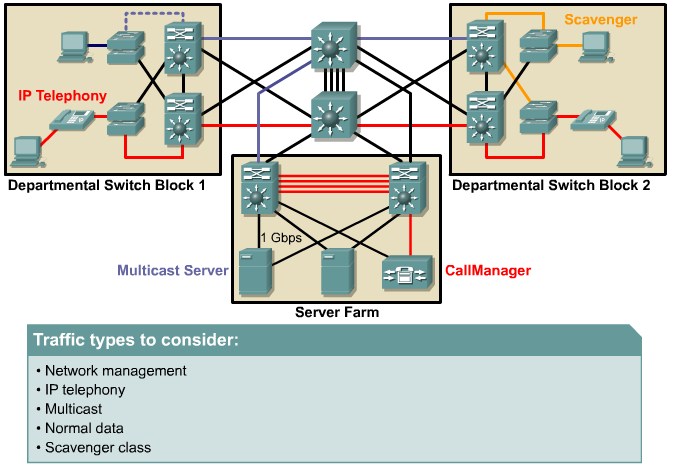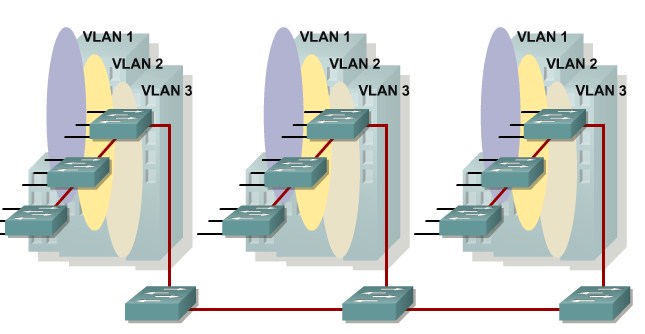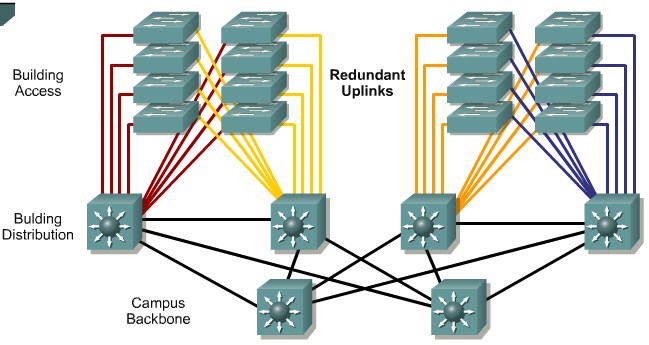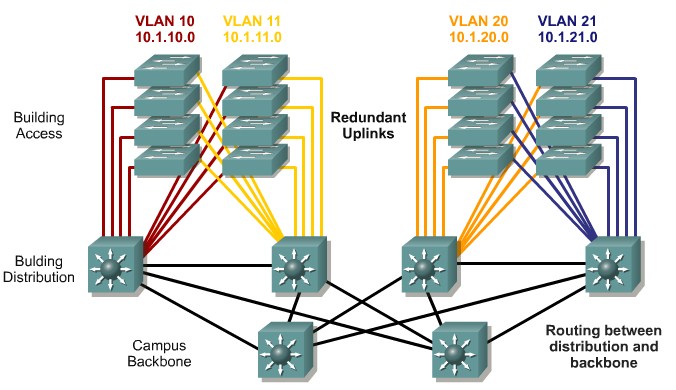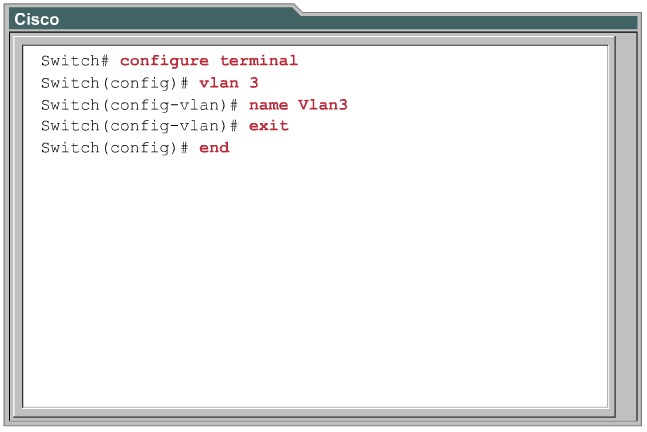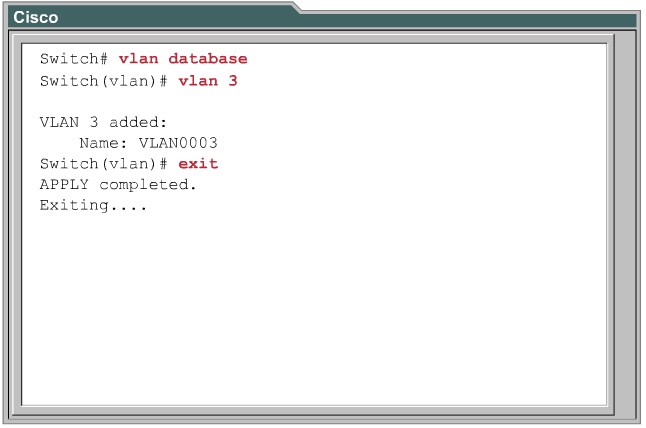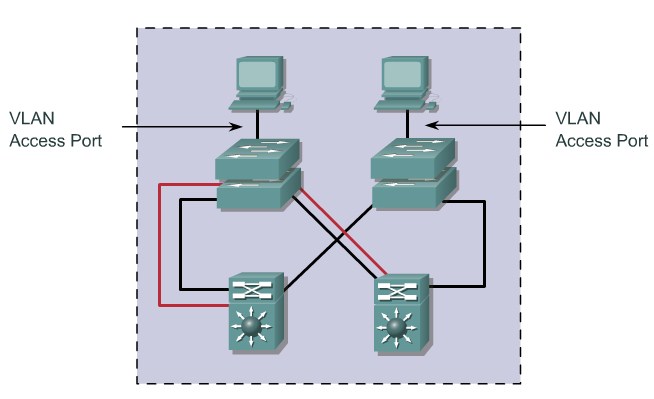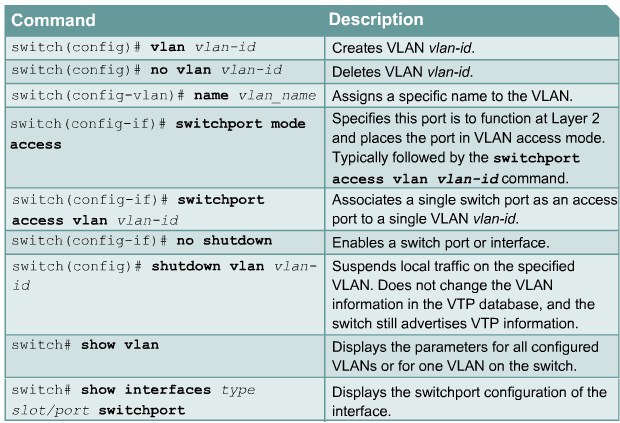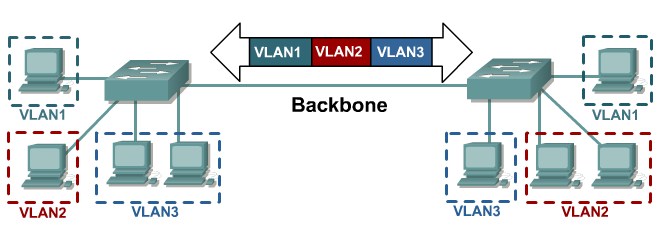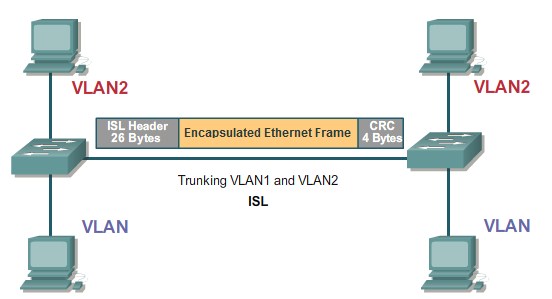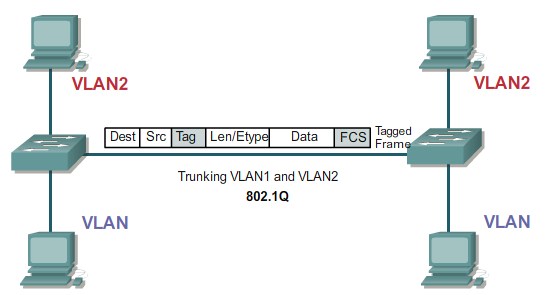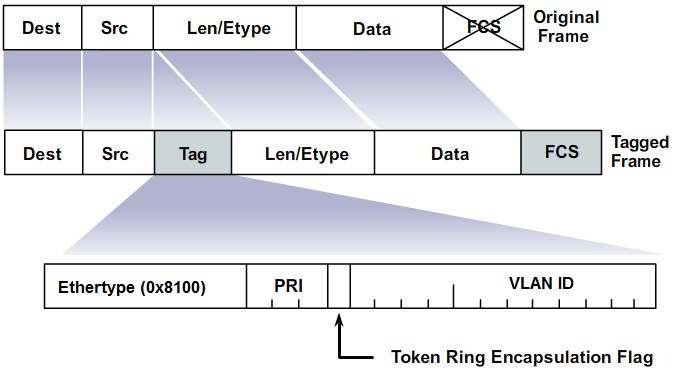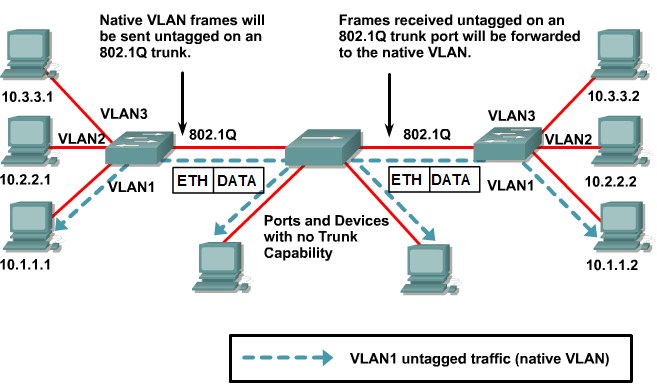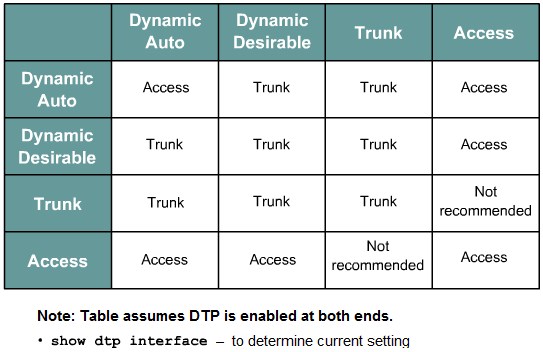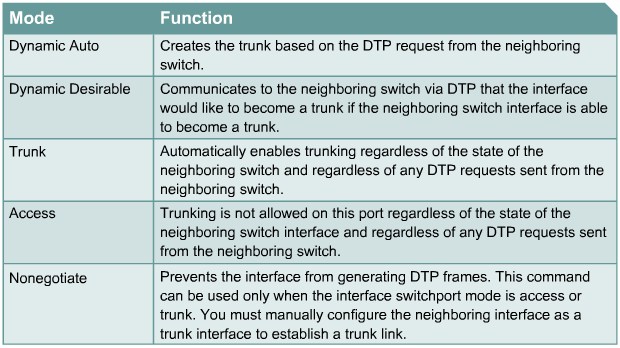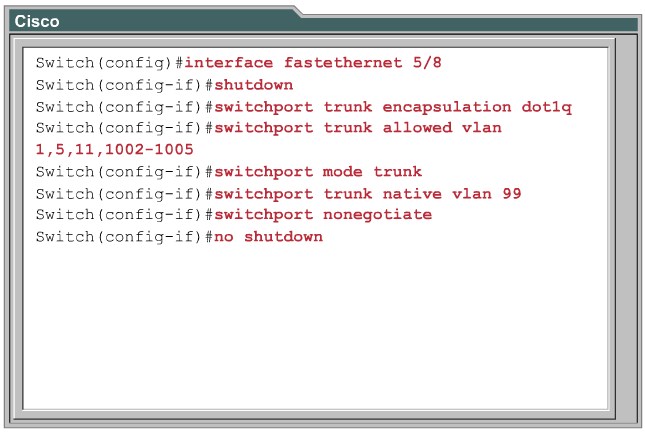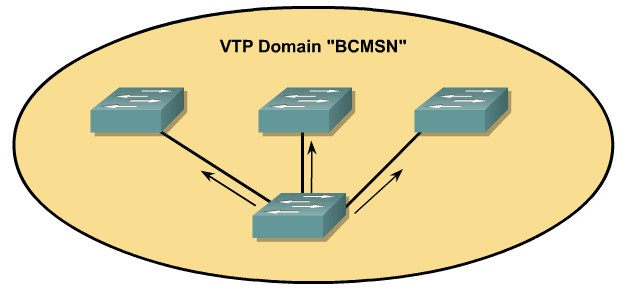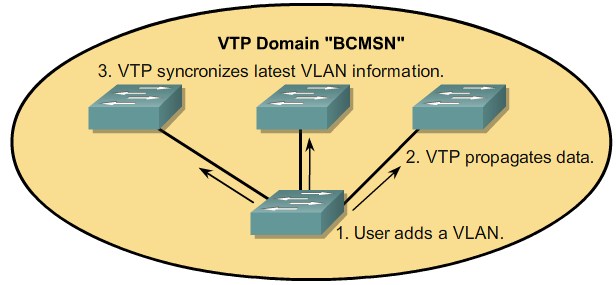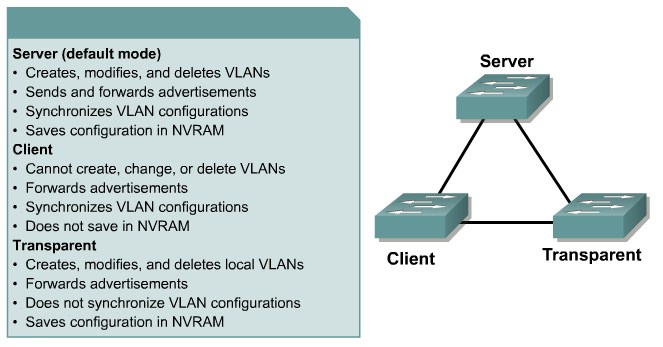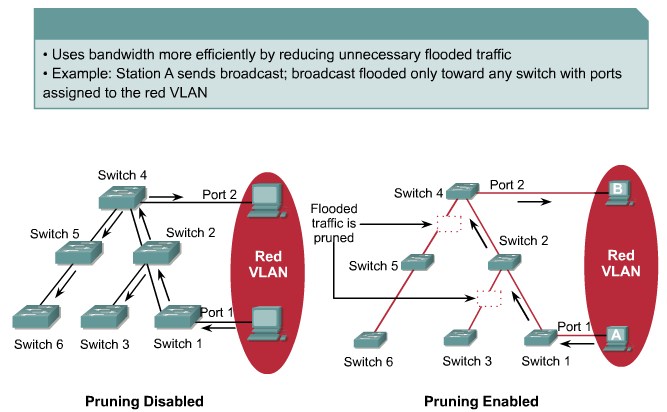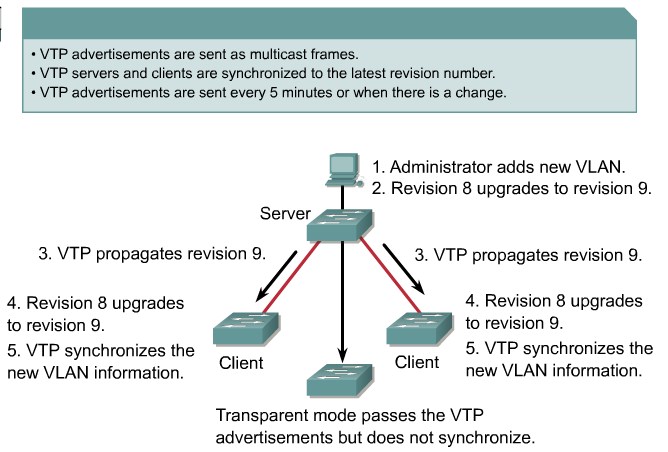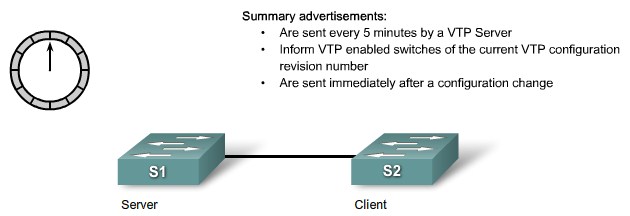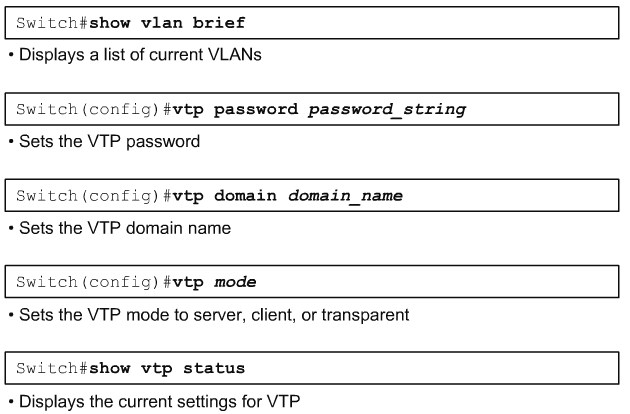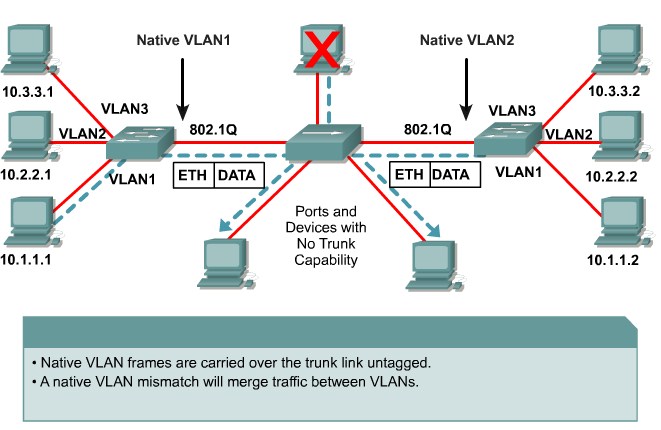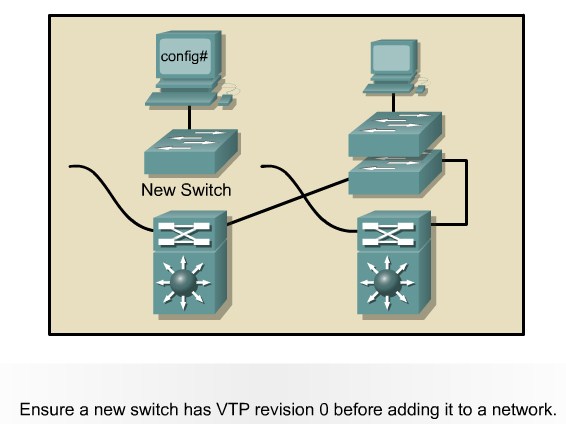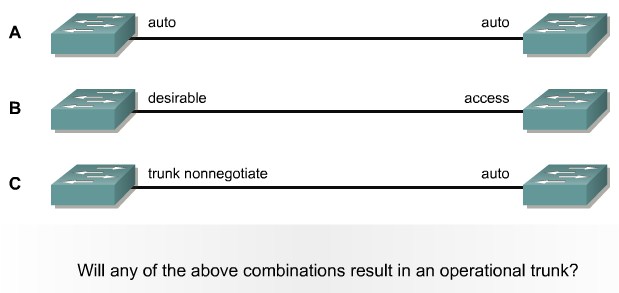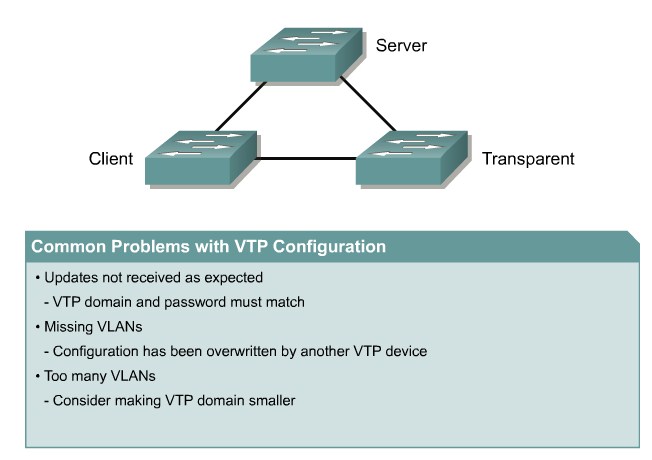Difference between revisions of "CCNP 3 Defining VLANs"
From Teknologisk videncenter
m (→Describing Issues with 802.1Q Native VLAN) |
m (→Adding New Switches to an Existing VTP Domain) |
||
| (4 intermediate revisions by the same user not shown) | |||
| Line 1: | Line 1: | ||
| − | =Implementing Best Practices for | + | =Implementing Best Practices for VLAN Topologies= |
==Describing Issues in a Poorly Designed network== | ==Describing Issues in a Poorly Designed network== | ||
{| | {| | ||
| Line 49: | Line 49: | ||
|[[Image:ScreenShot325.jpg|800px|left|thumb|Global VLAN configuration mode]] | |[[Image:ScreenShot325.jpg|800px|left|thumb|Global VLAN configuration mode]] | ||
|- | |- | ||
| − | |[[Image:ScreenShot326.jpg|800px|left|thumb| | + | |[[Image:ScreenShot326.jpg|800px|left|thumb|VLan Database mode]] |
|} | |} | ||
| + | |||
==Explaining VLAN access Ports== | ==Explaining VLAN access Ports== | ||
{| | {| | ||
| Line 136: | Line 137: | ||
'''Step 7''' Verify the configuration.<br/> | '''Step 7''' Verify the configuration.<br/> | ||
'''Step 8''' Verify that updates are being sent from or received by the switch as intended.<br/> | '''Step 8''' Verify that updates are being sent from or received by the switch as intended.<br/> | ||
| − | |||
| − | |||
| − | |||
| − | |||
|} | |} | ||
=Correcting Common VLAN Configuration Errors= | =Correcting Common VLAN Configuration Errors= | ||
| Line 148: | Line 145: | ||
==Adding New Switches to an Existing VTP Domain== | ==Adding New Switches to an Existing VTP Domain== | ||
| + | {| | ||
| + | |[[Image:ScreenShot345.jpg|800px|left|thumb|Revision error]] | ||
| + | |} | ||
| + | ==Describing Trunk Link Problems== | ||
| + | {| | ||
| + | |[[Image:ScreenShot347.jpg|800px|left|thumb|Trunk Link]] | ||
| + | |} | ||
| + | ==Common Problems with VTP Configuration== | ||
| + | {| | ||
| + | |[[Image:ScreenShot348.jpg|800px|left|thumb|Common VTP Problems]] | ||
| + | |} | ||
Latest revision as of 14:32, 22 August 2011
Implementing Best Practices for VLAN Topologies
Describing Issues in a Poorly Designed network
Grouping Business Functions into VLANs
Interconnection Technologies
Oversubscription
|
Network traffic Types
Describing End-to-End VLANs
Describing Local VLANs
|
Mapping VLANs in a Hierarchical network
When mapping VLANs onto the new hierarchical network design, keep these parameters in mind.
|
Implementing VLANs
VLAN Configuration modes
Explaining VLAN access Ports
| VMPS - VLAN Membership Policy Server |
Vlan Implementation
Implementing Trunks
Explaining VLAN Trunks
Describing ISL Trunks
Describing 802.1Q Trunking
Explaining 802.1Q Nativ VLANs
DTP Switchport Interactions
Configuring a Trunk
Propagating VLAN Configurations with VLAN Trunking Protocol
Explaining VTP Domains
Describing VTP
VTP Modes
Describing VTP Pruning
Describing VTP Operation
VTP Advertisements:
VTP Configuration
|
Step 1 Establish a design specifying which switches are server, client, or transparent, and what the boundaries are for the VTP domain. |
